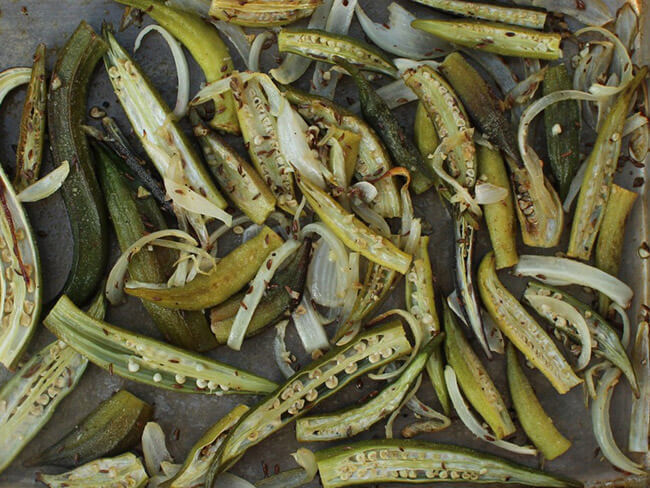A new way to enjoy okra: Roast it!
Try roasting this vegetable for a crispy take on a Southern delight.
If the slime factor of okra keeps you from enjoying this Southern staple, try roasting it. Roasting is an easy way to minimize sliminess. You can enhance the flavor by adding some spice and acidity.
Servings: 4
Prep time: 10 minutes
Ingredients
- 3 cups okra (about 10 ounces), stemmed and halved lengthwise
- 1/2 large yellow onion, thinly sliced
- 1 garlic clove, minced
- 1 teaspoon caraway seeds
- 1 to 2 tablespoons extra-virgin olive oil
- 1/4 teaspoon coarse salt
- A few grinds of freshly ground black pepper
- Juice from 1/2 lime
Directions
- Preheat the oven to 400 degrees.
- Toss the okra in a bowl with the sliced onions, minced garlic, caraway, olive oil, salt, and pepper until well combined. Place on a baking sheet and roast in the oven until okra and onions are tender and the edges begin to brown, about 10 to 12 minutes (took closer to 12 minutes in my oven).
- Remove from the oven and drizzle with lime juice and serve.
- Experiment with different seeds. I can see cumin, fennel, or crushed coriander seeds each working really well in place of the caraway.
- Also, try other acids instead of lime juice. Consider using lemon juice or a few drops of red wine vinegar at the end, or even roast the okra and onions with larger chunks of seeded tomato (a classic companion of okra). Acids help to cut the okra “goo” and, in general, they also brighten or enhance flavors, reducing the need for additional salt.
Nutrition information (per serving)
- Calories: 60
- Total fat: 3.5 g
- Saturated fat: 0.5 g
- Cholesterol: 0 mg
- Sodium: 150 mg
- Total carbohydrate: 8 g
- Dietary fiber: 3 g
- Total sugars: 2 g
- Protein: 2 g
Note: Nutritional information is calculated with 1 tablespoon oil.
